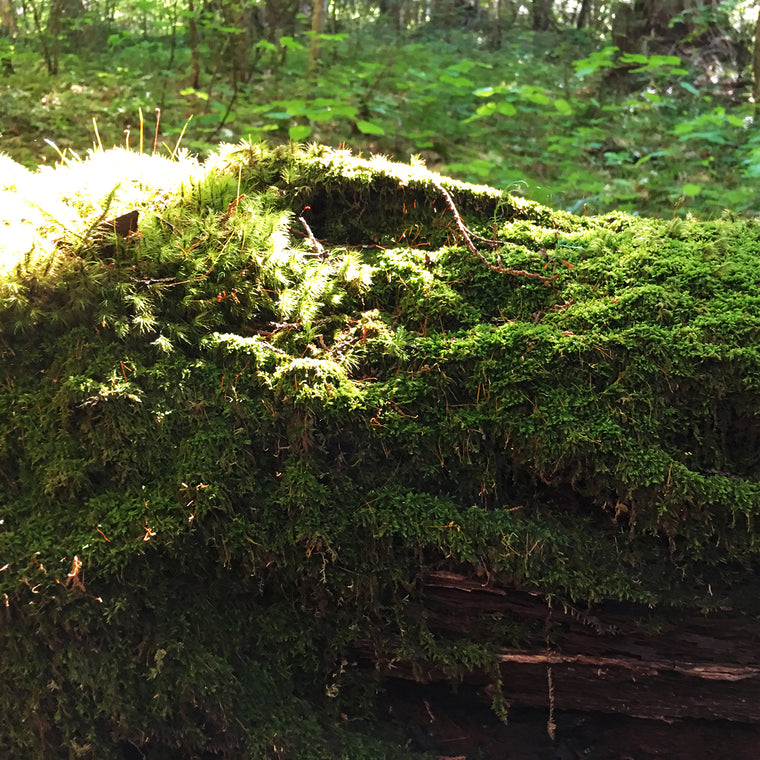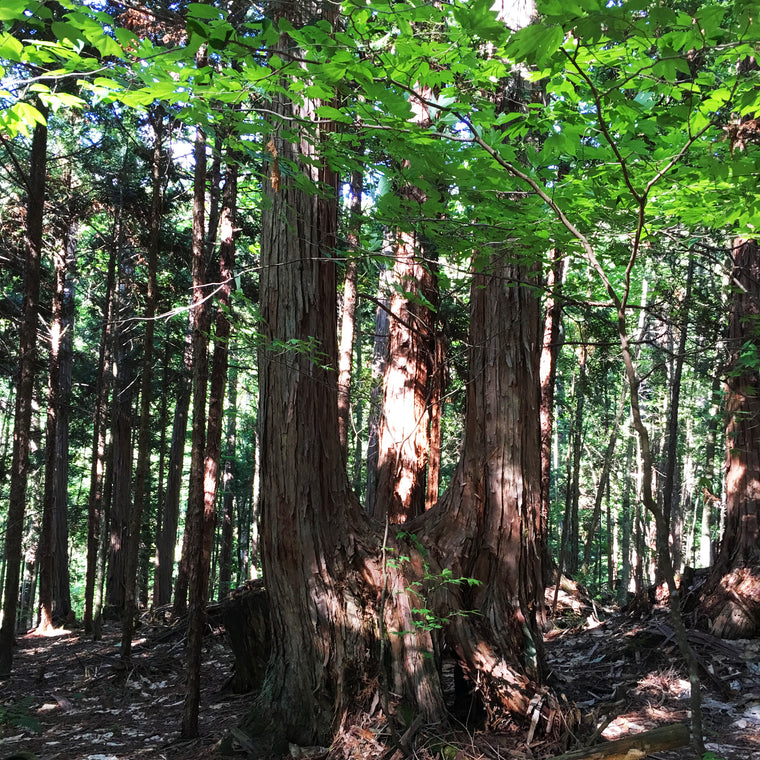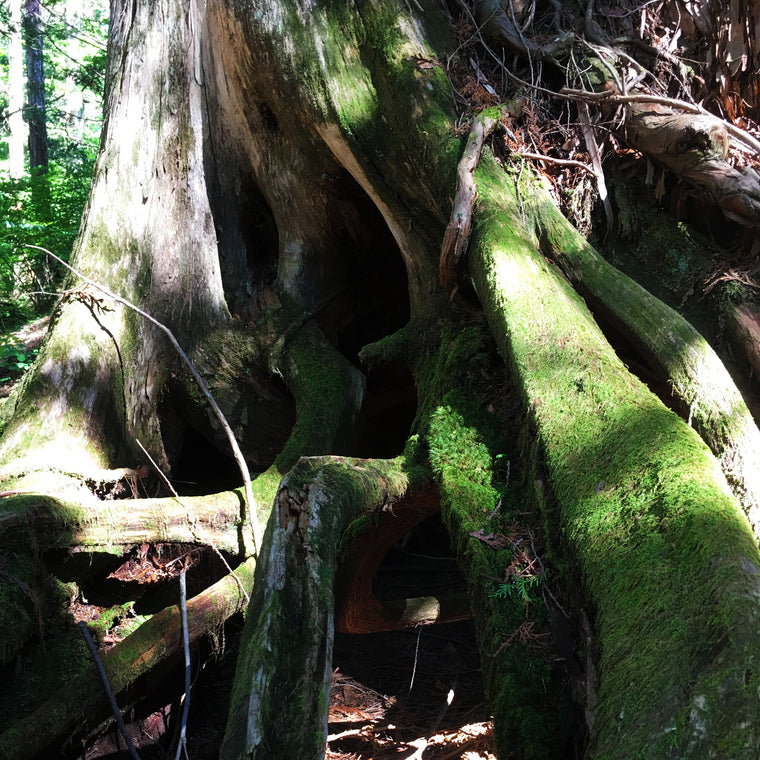About Kiso-Hinoki
“Hinoki” (Japanese cypress) is a type of tall, evergreen conifer which can reach up to 30-40m tall. It grows abundantly in Japan, from Tohoku (Fukushima Prefecture) in the north down to Honshu, Shikoku and Kyushu, yet what we call Kiso-Hinoki only refers to natural cypress raised in the Kiso Valley between Nagano and Gifu prefectures.
The steep slopes of Kiso’s mountains see abundant precipitation, especially in winter, when they are enveloped in the harsh cold and deep snow of the season. In the midst of this harsh natural environment, Kiso-Hinoki trees take twice or thrice as long to grow compared to other hinoki buds, leaving them to grow old very, very slowly. It’s this slow passing of time that create the beautiful and delicate tree rings associated with Kiso-Hinoki.
With outstanding durability, a high level of antibacterial properties, a clean fragrance, and a nearly divine beauty… it’s no wonder that Kiso-Hinoki is considered the unrivalled champion of the forest. From Nara’s Horyu-ji and Yakushi-ji temples to Honmaru Palace inside Nagoya Castle and Ozu Castle’s main keep, Kiso-Hinoki is used in Japan’s most prestigious buildings, religious structures and traditional crafts. Yet there is one place which is intricately linked with Kiso-Hinoki, and that is the Grand Shrine of Ise.

Kiso-Hinoki and the rebuilding of Ise Jingu (Shikinen-sengu)
Ise Jingu, considered the most important shrine in Japan, centres around the Kotai Jingu, more commonly known as the Naiku (inner shrine), and the Toyokedai Jingu (Geku, or outer shrine). Each are completely rebuilt every 20 years, in a festival known as shikinen-sengu, a 1,300-year-old tradition. During this special festival, the main shrine hall and other buildings are completely renewed, so the kami (deities or gods) can transition as well. It is an important ritual to pass on the technology and spirit to the next generation, while also being a festival to pray for the “regeneration” of trees.
The materials used for this tradition are natural Kiso-Hinoki cypress trees, which have been standing for over 300 years. Kiso-Hinoki, recognised by the most important of all shrines in Japan, can thus be seen as extremely valuable and precious.
History of Kiso-Hinoki and the five trees of Kiso
Kiso-Hinoki started gathering fame as a building material when Toyotomi Hideyoshi became ruler of the country in the Azuchi-Momoyama period, or the late 1500s. It was highly regarded after it was used in the construction of Osaka Castle and Fushimi Castle, after which Kiso-Hinoki was used exceptionally often for castles, mansions and shipbuilding across the country.
After around 100 years of massive logging, the resources of Kiso were depleted, and the mountain became a youngster again. Concerned about this state of affairs, the Owari Domain declared a strict rule of “one (human) neck per tree” and “one arm per branch”, as forest protection measures. Five types of trees were absolutely not to be cut: hinoki, sawara, asunaro, nezuko, and koyamaki. This was known as “Kisogoboku”, or the five trees of Kiso.
The Owari Domain’s rule lasted until 1869, or the second year of the Meiji Era. After this, the land was designated as a national forest belonging to the state. Due to the continued promotion of protective measures by the government, the Kiso Valley nowadays is abundant with natural hinoki trees which are over 300 years old, yet it remains a precious type of wood. The amount which can be used as lumber is set by the government, and only a limited number of appointed contractors are allowed to log.


Eco-friendly due to its preciousness
Our Kiso-Hinoki Toothpaste Gel uses distilled water of the natural, 300-year-old Kiso-Hinoki tree, which has been felled by these specially appointed loggers, or somabito, only.
The trunk is used as high-grade lumber for special location such as Ise Jingu, but what we use are the leftover leaves and branches. Precisely because it is this precious, natural Kiso-Hinoki, we aim to use it with the utmost care and no waste.
Besides this, no added, unnecessary ingredients—by thoroughly implementing this policy, we could make distilled water from only hinoki wood chips and spring water which had been nurtured by nature.
Protecting our oral environment is genuine, natural power.






